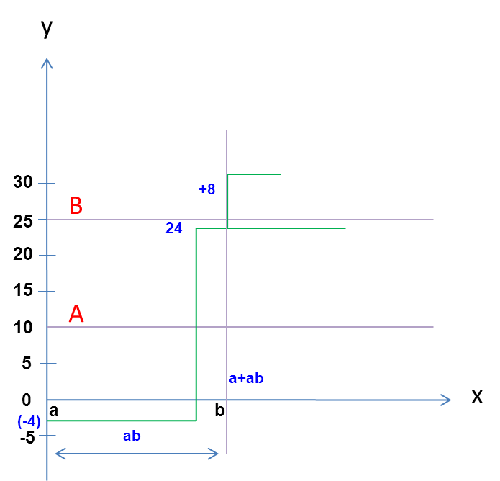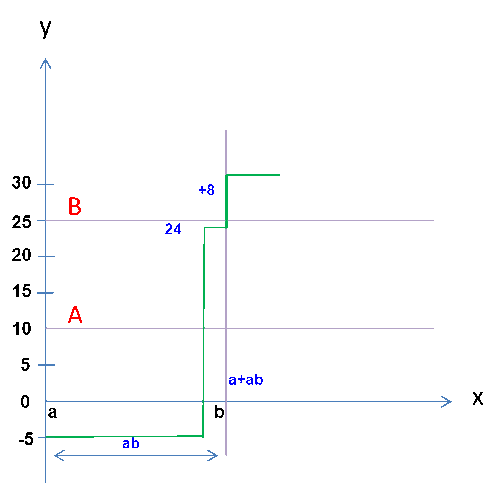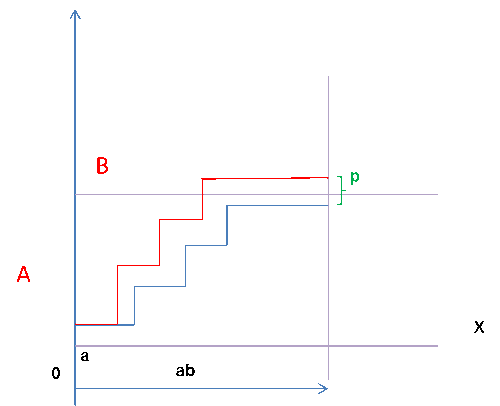Order Proposals
Introduction
The Order Proposal routine scans all the parts that fulfill the selection criteria, in order to find the parts for which additional supply must be created.
A report is generated, and optionally, purchase requisitions, purchase orders, distribution orders, or shop order requisitions are created. You can also delete existing purchase requisitions and un-released distribution orders, provided they are created by order proposal.
This document describes the scanning logic in detail. It includes the following
sections:
Criteria Affecting the Order Proposal - This section describes
all the part settings that are used by Order Proposal.
Manufactured/Acquired
Split and Order Proposal - This section describes how the order proposal is
affected by the Manufactured/Acquired Split functionality.
Supplier Split
and Order Proposal - This section describes how the order proposal is affected
by the Supplier Split functionality.
Terms Used in the Calculations - This
section defines all the terms used in the calculations.
Criteria Affecting the Order Proposal
The parts have to fulfill the criteria specified in the Create Order Proposal dialog, as well as the following criteria:
- Planning Method - For a part to be processed by the order proposal this must be either B or C.
- Part Status Code - The supply flag for the part status code used must be Supplies Allowed.
- Vendor Managed Inventory (VMI) - The part must not be vendor managed.
- Part Availability Control - Parts at the locations where the part availability control is set to Not Nettable will not be included in the calculation.
- Expiration Date - Expired parts will not be included in the calculation.
- To have a distribution order created, the supply type must be Order, and multi-site planned part must be selected for the primary supplier of the part.
Manufactured/Acquired Split and Order Proposal
When the order proposal has suggested the required quantity it is either manufactured or purchased depending on the part type. Before the quantity is sent to either manufacturing or purchasing, it could be split in accordance to the Manufactured/Acquired Split percentage as defined on the inventory part. If this split is used, one split quantity will be sent to manufacturing and the other split quantity will be sent to purchasing. Both split quantities should have been rounded using Scrap Rounding. When the order proposal is used the manufactured quantity is always put on a shop order requisition regardless of the default supply type or the manufactured supply type. The purchased quantity is put on a purchase requisition, purchase order, or distribution order as explained above, regardless of whether or not the purchase quantity is derived from a split.
Supplier Split and Order Proposal
Supplier split comes into use when the default supply type is Requisition. Then the order proposal passes along a quantity to the purchase requisition. The purchase requisition functionality considers the split for non-multi-site planned parts. This means that the only way to get the order proposal to consider supplier split is to use the supply type Requisition. Using this supply type implies that a distribution order will not be created, i.e. if the supplier split includes lines for multi-site planned parts, those lines will not be considered.
Terms Used in the Calculations
The following terms are used in the order proposal flowcharts:
- Projected Qty on-hand: The usable quantity projected for the date.
- Order point (OP): The point used to trigger the creation of an order proposal when the projected quantity on-hand falls below this point.
- Safety stock (SS): A quantity of stock that is planned to remain in inventory to protect against fluctuations of demand or supply.
- Lot Size (LS): The desired lot size, i.e., the total quantity to be manufactured or purchased. If the planning method is B, the part will be re-ordered in multiples of this quantity, until the order point is reached or exceeded. If the planning method is C, the part will be re-ordered up to this level. In situations where an abnormally high demand is experienced within the lead-time of the part, the part may be re-ordered above this level.
- Lead-Time (LT): The time needed for manufacturing or purchasing the part.
Consider the following figures as an example when using Planning Method B;
Order point (OP): 25
Safety stock (SS): 10
Lot Size (LS): 8
Lead Time (LT): 21
The starting point for the order point calculation is to look at the current quantity and any old supplies and demands that should have occurred up until today. This is the projected value shown on the Inventory Part Availability Planning page.
Some practical figures of Inventory Part Availability Planning would be as follows;
Inventory Part Availability Planning:
Due Date
Type
Status
Supply
Demand
Reserved
Pegged
Shortage
Projected
Plannable
16.12.20XX
Cust Order
Partially Delivered
0
1
0
0
1
-1
22.12.20XX
Purch Order
Confirmed
14
0
0
0
0
13
25.12.20XX
Cust Order
Released
0
1
0
0
0
12
25.12.20XX
Cust Order
Released
0
1
0
0
0
11
25.12.20XX
Cust Order
Released
0
2
0
0
0
9
25.12.20XX
Cust Order
Released
0
2
0
0
2
7
29.12.20XX
Cust Order
Released
0
1
0
0
1
6
01.01.20XY
Cust Order
Released
0
2
0
0
2
4
05.01.20XY
Cust Order
Released
0
3
0
0
3
1
05.01.20XY
Cust Order
Released
0
2
0
0
2
-1
07.01.20XY
Cust Order
Released
0
1
0
0
1
-2
07.01.20XY
Cust Order
Released
0
1
0
0
1
-3
07.01.20XY
Cust Order
Released
0
1
0
0
1
-4
25.01.20XY
Purch Order
Released
24
0
0
0
0
20
20
10.03.20XY
Cust Order
Released
0
10
0
0
0
10
9999999,99
Purchasing Lead Time: 21
Unlimited Supply Date: 30.01.20XY
The projected quantity on-hand by 08-01-20XY then defines the starting point for the order proposal calculations for this part it is (-4). From this starting point, the order proposal will (as it is below OP at the starting point) look ahead one lead time (till the 29th of January) to see if there are any supplies planned for delivery during that time that takes the projected quantity on-hand above the OP.
Note that order proposal will only consider planned supplies when looking ahead for one lead-time of the part (i.e., it will not look at future demands unless they are abnormally high, see note below) If there were planned supplies that make the projected quantity on-hand become equal to or greater than the OP, there would not be any new requisitions added for this part.
For the above example the projected quantity on-hand (only considering future supplies) one lead time into the future is 20 (29.1. 20XY). This is due to the planned supply of 24 pcs that is due on 25.1.20XY. This means that we are still below order point when looking one lead time into the future (20):
Due Date
Type
Status
Supply
Demand
Reserved
Pegged
Shortage
Projected
Plannable
16.12.20XX
Cust Order
Partially Delivered
0
1
0
0
1
-1
22.12.20XX
Purch Order
Confirmed
14
0
0
0
0
13
25.12.20XX
Cust Order
Released
0
1
0
0
0
12
25.12.20XX
Cust Order
Released
0
1
0
0
0
11
25.12.20XX
Cust Order
Released
0
2
0
0
0
9
25.12.20XX
Cust Order
Released
0
2
0
0
2
7
29.12.20XX
Cust Order
Released
0
1
0
0
1
6
01.01.20XY
Cust Order
Released
0
2
0
0
2
4
05.01.20XY
Cust Order
Released
0
3
0
0
3
1
05.01.20XY
Cust Order
Released
0
2
0
0
2
-1
07.01.20XY
Cust Order
Released
0
1
0
0
1
-2
07.01.20XY
Cust Order
Released
0
1
0
0
1
-3
07.01.20XY
Cust Order
Released
0
1
0
0
1
-4
25.01.20XY
Purch Order
Released
24
0
0
0
0
20
20
29.01.20XY
Purch req
Planned
8
0
0
0
0
28
28
10.03.20XY
Cust Order
Released
0
10
0
0
0
18
9999999,99
Note that in the above picture a new purchase order (PO) requisition is added by the order proposal calculation for a quantity of 8 (the lot size), due on 29th of January (one lead time away if order is placed today). The projected quantity on-hand of 28 is now above the order point when looking one lead time into the future from today (i.e., the system date which is 08-01-20XY as per the the example given).
If we are to present this scenario in a more schematic way, then it would be as follows;
Before running order proposal:

x-axis - Time in days
y-axis
- Quantity
A - Safety Stock
B - Order Point
a - Today
ab - Lead Time
a+ab
- Today+ Lead Time
As can be seen, when looking one
lead-time ahead into the future (the timeframe when new supplies would be received)
the projected on-hand is below the order point. This means that a new supply
should be added and it will be added as one lot size (or a multiple of lot sizes
if required to take the level above OP). Once again, note that future planned
demands are not considered, only planned supplies, except in situations of abnormal
demand (see below). The reason that future demands are not considered is that
the values set for SS and OP should be chosen to cover the normal demands during
lead-time. If future demands were to be considered, it would result in ordering
too soon and a quantity-in-stock higher than required. Therefore, in simple
terms, the order proposal could be said to be looking for;
(projected quantity on-hand + any planned supplies during the timeframe of one lead-time into the future).
Continuing with the example, after running order proposal, the projected quantity-on-hand would end up as shown below;

x-axis - Time in days
y-axis
- Quantity
A - Safety Stock
B - Order Point
a - Today
ab
- Lead Time
a+ab - Today+
Lead Time
Now, when looking one lead-time into the future, the projected quantity on-hand is above the OP and there is no need to add new requisitions. Running order proposal once more would not make any difference. The added requisition should be transferred to a PO and sent to supplier. If there is a delay in doing this, there is a possibility of re-planning requisitions that have not been transferred to PO the next time the order proposal is executed. (Old requisitions that were created by the Order Proposal and not transferred to PO can be removed when running the order proposal. Then, new requisitions with new dates will be added).
Consider what would happen in the following which is based on the above example if we have a new Customer Order added today (08.01.20XX) for a qty of 1 that has not been delivered:
The following situation would be resulted when running the order proposal tomorrow (09.01) (or it could be Monday (12.1)...):

x-axis - Time in days
y-axis
- Quantity
A - Safety Stock
B - Order Point
a - Today
ab
- Lead Time
a+ab - Tomorrow+
Lead Time
The resulting changes are not so big. The projected curve has moved one day to the left and the projected quantity has also moved a step equivalent to 1 pc (as the customer order was added ”yesterday”).
As time passes the projected curve will move to the left and downwards as new demands are created.
Over time there will be new requisitions added and if assuming a relatively smooth demand curve, the order size of these requisitions will be one lot size. The planning settings for the part will mean that there will be new requisitions added approximately two times during a lead-time (as the lot size corresponds to just a little bit more than half of the demand during lead-time). This will give the following curve of actual quantity on-hand for this part:

x-axis - Time in days
y-axis
- Quantity
A - Safety Stock
B - Order Point
a - Lead Time
Note that this represents a historical curve of the quantity on-hand for
the part, as opposed to the previous charts that show current situation today
and a projection of incoming supplies.
The actual quantity on-hand for this part should vary between safety stock and up till one lot size above that.
Note: The special logic described below is used when extremely high future demands have been entered.
If the future demand is higher than Order Point minus Safety Stock (OP-SS), the OP will be temporarily increased within the order proposal logic.

Note, the label A above should be placed where it belongs, i.e. where the safety stock is above a where the blue and red line starts.
x-axis - Time in days
y-axis
- Quantity
A - Safety Stock
B - Order Point
a - Today
ab
- Lead Time
a+ab - Today+
Lead Time
p -
Demand from planned orders exceed expected demand a seen from (order point
- safety stock).
For example, OP is 25 and SS 10, the expected demand during the lead time
is 15. If a demand is entered that exceeds 15, e.g. 20, the system will temporarily
increase the OP with the difference 20-15 = 5 and consider it as 30. Then the
(projected quantity on-hand + any planned supplies during the timeframe of one
lead-time into the future) is compared with the OP 30 to determine if any new
supply should be created and at what order quantity.
The temporary changes
of order point will not have any impact on the order point specified on the
inventory part; it is only used in the order proposal.
Planning Method C
When using Planning Method C, the only difference
is how the system calculates the quantity that is needed to order when the projected
quantity on-hand is below the order point one lead-time ahead. Instead of ordering
in multiples of lot size, method C orders up to the lot size. The system will
check the total demand quantity for one lead-time to see if it is greater than
the difference between the order point and safety stock. If so, the OP is temporarily
increased. The system will take the greatest value of the temporarily increased
OP and lot size to determine the order quantity.